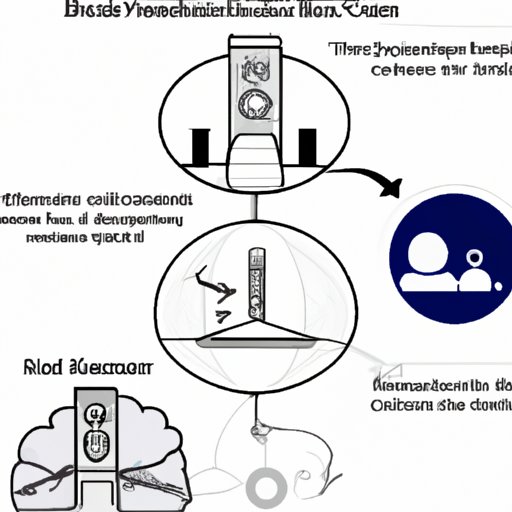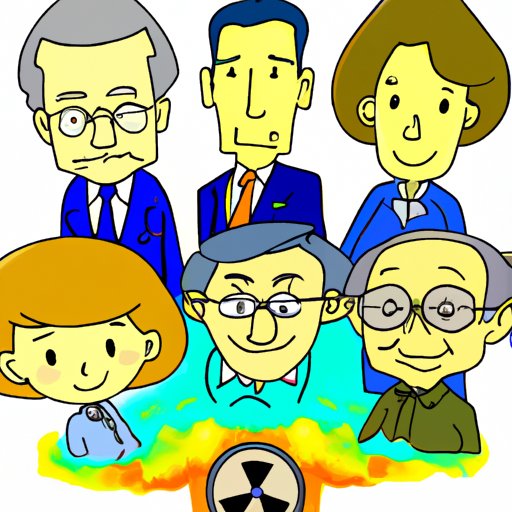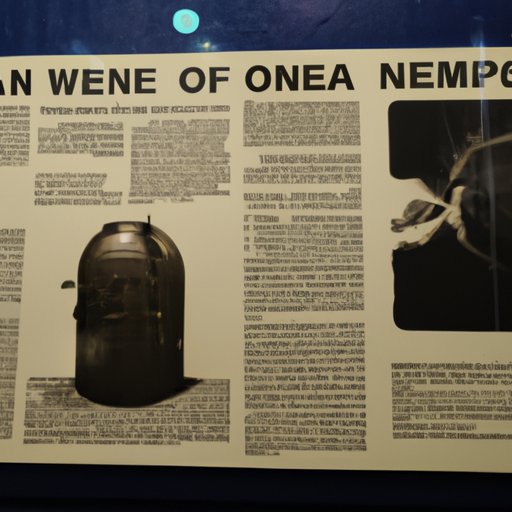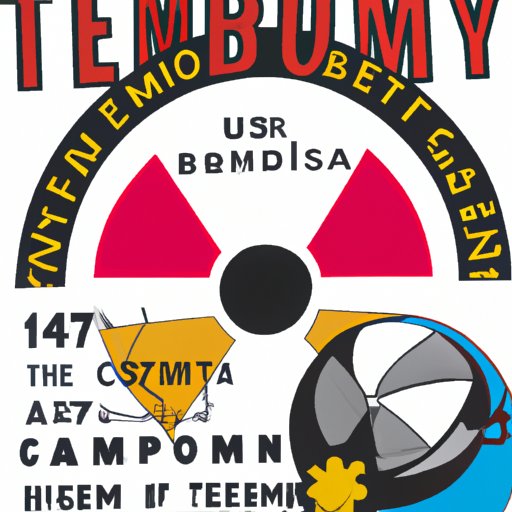Introduction
The atomic bomb is one of the most powerful weapons ever created, capable of devastating destruction on a massive scale. It is a weapon that has shaped world history and changed the face of warfare forever. This article will explore the history of the atomic bomb, from its beginnings in early research and experiments to the momentous Trinity Test. We will look at the science behind the invention and the people who made it possible, as well as how the atomic bomb changed World War II.

A Timeline of the Development of the Atomic Bomb
The idea of an atomic bomb had been around since the late 19th century, but it was not until the 1930s that the technology to make such a weapon became available. In 1939, Albert Einstein wrote a letter to President Roosevelt warning him about the potential for a nuclear weapon being developed by Germany. This prompted the US government to begin funding research into nuclear fission, which eventually led to the creation of the Manhattan Project.
The Manhattan Project was an effort by the United States, Britain, and Canada to develop an atomic bomb before Nazi Germany did. It was headed by physicist J. Robert Oppenheimer and included scientists such as Enrico Fermi and Edward Teller. The project began in 1942 and involved the construction of several secret laboratories across the US. By 1945, the team had succeeded in creating the first atomic bombs.
On July 16, 1945, the first atomic bomb test was conducted in the desert near Alamogordo, New Mexico. It was code-named the Trinity Test and was a success, leading to the decision to use the bomb against Japan. On August 6, 1945, the US dropped an atomic bomb on Hiroshima, followed three days later by another bomb on Nagasaki. These attacks marked the end of World War II and ushered in the age of nuclear warfare.
Exploring the Science Behind the Invention of the Atomic Bomb
The science behind the invention of the atomic bomb is complex, but it all starts with the process of nuclear fission. Nuclear fission occurs when an atom is split apart, releasing energy in the form of radiation. This energy can be harnessed to create a nuclear reaction, which is then used to power a bomb.
Uranium and plutonium are both elements that are capable of undergoing nuclear fission. Uranium is naturally occurring, while plutonium is man-made. Both elements were used in the development of the atomic bombs, with uranium being used in the Hiroshima bomb and plutonium in the Nagasaki bomb.
The development of the atomic bomb required a great deal of scientific knowledge, as well as a thorough understanding of the physics of nuclear reactions. Scientists such as Oppenheimer, Fermi, and Teller worked together to develop the technology necessary to create an atomic bomb.

The People Who Invented the Atomic Bomb
The invention of the atomic bomb would not have been possible without the contributions of several key scientists. J. Robert Oppenheimer was a physicist who is widely considered to be the father of the atomic bomb. He was the head of the Manhattan Project and oversaw the development of the first bombs.
Enrico Fermi was an Italian-American physicist who played a major role in the development of the atomic bomb. He was responsible for helping to create the first reactor to produce plutonium, which was then used in the Nagasaki bomb.
Edward Teller was a Hungarian-American physicist who is often referred to as the “father of the hydrogen bomb”. He helped to develop the technology that allowed for the creation of thermonuclear weapons.

The History of the First Atomic Bomb Test
On July 16, 1945, the first atomic bomb test was conducted in the desert near Alamogordo, New Mexico. The test was code-named the Trinity Test and included the detonation of a plutonium-based device. The explosion was visible from more than 100 miles away and caused a shockwave that could be felt hundreds of miles away.
In the weeks leading up to the test, the scientists involved in the Manhattan Project had been preparing for the event. They had built a tower to hold the bomb and had constructed a bunker to protect them from the blast. When the bomb detonated, they watched from the bunker as a huge fireball lit up the sky.
The test was a success and demonstrated the power of the atomic bomb. It paved the way for the US to drop two atomic bombs on Japan in August 1945, bringing an end to World War II.
How the Atomic Bomb Changed World War II
The dropping of the atomic bombs on Hiroshima and Nagasaki marked the end of World War II. The bombing of these cities had a devastating effect, killing tens of thousands of people instantly and leaving many more injured and homeless. The devastation caused by the bombs shocked the world and forced Japan to surrender.
The use of the atomic bomb also ushered in the era of the Cold War. The US and the Soviet Union had both developed atomic weapons and were now locked in an arms race to build bigger and better bombs. This led to an increased tension between the two superpowers, as well as an increased fear of nuclear war.
Conclusion
The invention of the atomic bomb was a major turning point in world history. It changed the face of warfare and ushered in a new era of nuclear weapons. In this article, we explored the history of the atomic bomb, from its beginnings in early research and experiments to the momentous Trinity Test. We looked at the science behind the invention and the people who made it possible, as well as how the atomic bomb changed World War II.
The atomic bomb is a powerful reminder of the destructive power of science and technology. It is a weapon that has had a profound impact on the world and one that will continue to shape history for years to come.
(Note: Is this article not meeting your expectations? Do you have knowledge or insights to share? Unlock new opportunities and expand your reach by joining our authors team. Click Registration to join us and share your expertise with our readers.)
